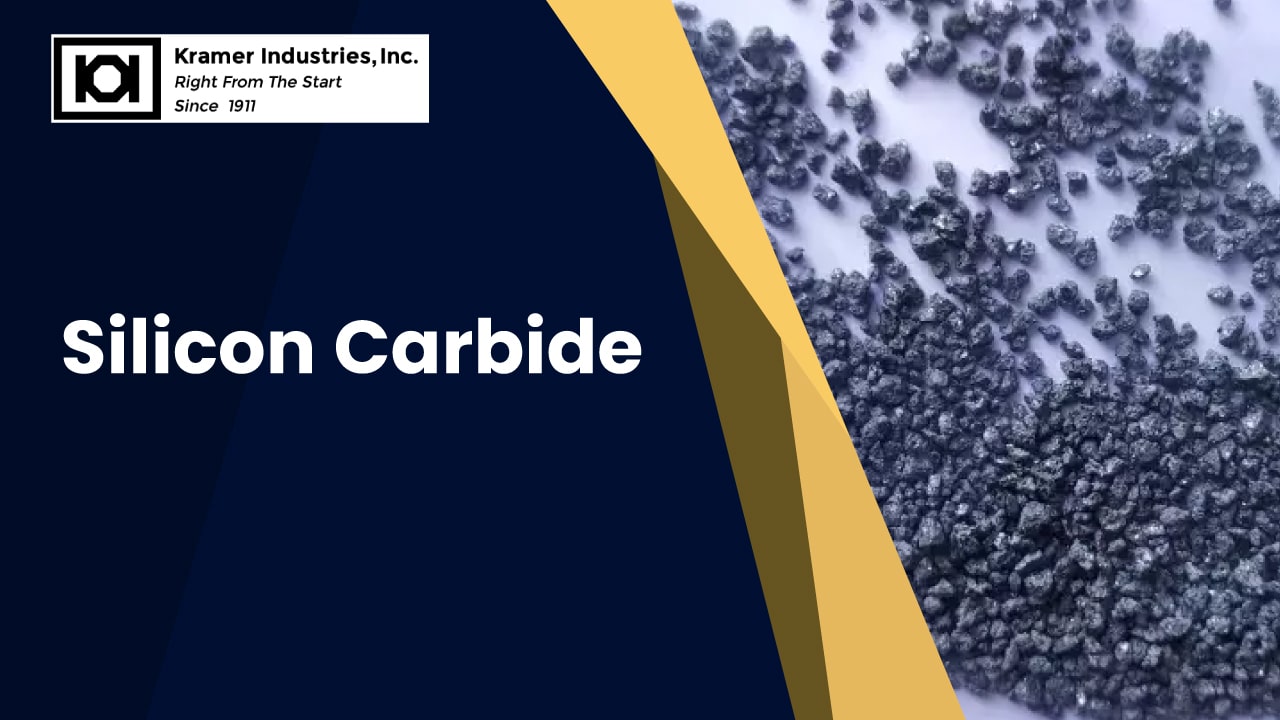Silicon Carbide has quite a name in the world of abrasive blasting. It is a mineral abrasive, not just admired but relied upon. With a Mohs hardness rating of 9.5, it falls just a little below diamond itself. Today, it has earned quite a reputation as one of the most formidable blasting media available. From smoothing rugged stone to etching delicate glass, silicon carbide delivers impressively with speed, strength, and striking precision.
How is Silicon Carbide formed?
This compound is formed from the elemental bond of silicon and carbon. It is a rare marvel in nature and commonly produced through quite an intricate synthetic process. Its industrial genesis begins with raw materials such as silica sand, petroleum coke, and sawdust. They are combined in precise ratios, blended well, and processed with blistering heat in an Acheson furnace. In the furnace, silica and carbon undergo a carbothermal reaction. The result is the quite impressive crystal structure of silicon carbide.
Once cooled, these crystals are broken down and graded into varied grit sizes. Each grit size is quite suited to a specific application. They range from coarse variants for deep, aggressive cutting to micro-fine grain-like particles for delicate frosting. The end result is a sharp, angular, and reliable medium that redefines performance in surface treatment.
Manufacturing this formidable media is no casual feat. The carbothermal reduction process that creates silicon carbide requires quite extreme temperatures and precision monitoring, not to mention strict quality control. Every stage of production is geared towards creating a product that performs almost always without compromise.
What Makes Silicon Carbide so Powerful in Abrasive Blasting?
For starters, its extreme hardness allows it to penetrate and clean surfaces where softer media fall much short. It goes beyond scraping the surface to sculpting it. When used in blasting cabinets, this media moves through rust, old coatings, and other contaminants with quite ruthless efficiency. Though it is abrasively dominant, it is quite capable of fine-tuning intricate details without compromising geometries. This makes it the common choice in industries of precision such as aerospace and electronics.
Silicon carbide is often chosen in applications where other abrasives like aluminum oxide do not quite perform up to the mark. If you are dealing with etched glassware that has quite delicate patterns or stone monuments that must retain structural integrity, silicon carbide gives great results.
What are the Applications of Silicon Carbide?
Its role in industries is vast and varied:
- In shipyards, it strips aged coatings from hulls with determined force, preparing them for a second life at sea.
- In aircraft maintenance, it handles delicate metal surfaces with care and competence, ensuring parts are prepped without warping.
- In automotive repair, it restores bodywork. It does a good job of smoothing and prepping metal for repainting, giving old cars a new lease of life.
- In construction, it’s used to refine concrete surfaces. It leaves them polished and prepped for sealants or coatings.
- In sculpture and masonry, it shapes and polishes stone with persistence, yielding detail and form.
- In creative and delicate tasks like etching glass or sanding wood, silicon carbide shows its adaptability. Its presence in coated abrasives for wood and plastic finishing speaks to its controlled aggression. Artists and craftsmen gravitate toward it for its consistent performance and reliability.
- Its applications are not confined to traditional industries. When it comes to art and design, silicon carbide has found an unexpected stage. Artists use it to create tactile textures on materials. Designers have been relying on it to craft patterns on surfaces like glass, stone, or even high-grade plastics. It has now become a tool of transformation.
How Cost-Effective is Silicon Carbide?
Now, while silicon carbide offers elite performance, it comes at a price. It fractures faster than some alternatives, making it less recyclable in high-volume operations. For this reason, it’s often reserved for tasks where its superior hardness is absolutely essential.
Conclusion
Be it the surface finishing of rusted ship hulls, vintage cars, or finely etched glass, silicon carbide is the silent, sharp partner that gets the job done. Its efficiency is quite impressive. It is not just an abrasive; it’s a precision instrument in the hands of those who understand surface science.
From the grit beneath a craftsman’s hand to the precision needed in aerospace preparation, silicon carbide carves its niche wherever the stakes are high, and surfaces matter. It combines brute strength with detailed delicacy—a duality that makes it both feared and favored.
Ready to elevate your blasting results with unmatched sharpness and precision? Explore Kramer Industries’ high-grade silicon carbide media and discover the grit that powers professionals across industries. Let Kramer Industries help you turn surface challenges into smooth victories.


